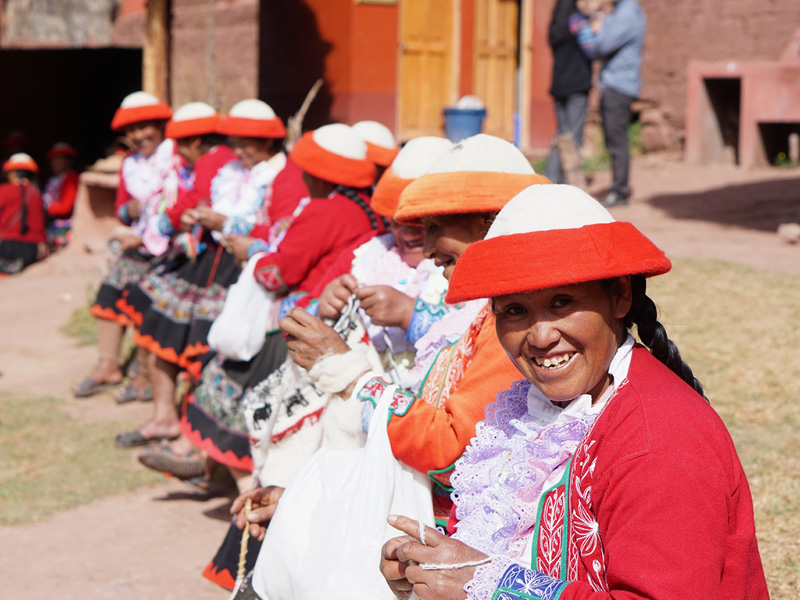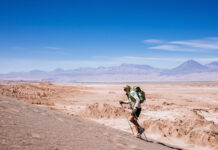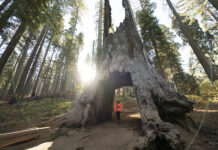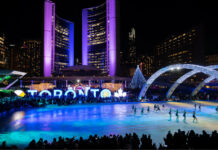
I am standing at the Inca Sun Gate overlooking Peru’s Lost City. Machu Picchu and the vast mountain range beyond is painted with sunbeams and shadows. Blessed with a perfect, clear and quiet morning, I hold my family close and soak in the view before the rush of tourists.
Machu Picchu features some of the world’s most spectacular ruins. Built during the Incans’ 100 year empire that began in 1438, it came to light in Western culture thanks to American historian Hiram Bingham and National Geographic Magazine in 1913. It was deemed a United Nations World Heritage site in 1983 and is among the new Seven Wonders of the world.
At 7,970 feet elevation,this home for Inca civilization shows off its intricate architecture and detail. You can’t imagine how the rocks have been cut, shaped and transported to build these structures.
As we descend from the lookout to the Lost City, lush greenery fills the Sacred Valley lining the rock walls on either side of us. The contrast of scenery on the climb compared to the descent shows how different the Andes are from our own Rocky Mountains.
Being the winner of IMPACT Magazine’s Ultimate Fan Contest, I was awarded a 12-day G Adventures tour of Peru. My husband Mike, son Lachlan and his girlfriend Erin joined me on the tour, the highlight of which was the exhilarating Lares Trek.
There are two routes to Machu Picchu, both are challenging mountainous, multi-day hikes. The Inca trail is 44K and passes many historic ruins on the way to the Sun Gate. It is the popular choice but can be crowded, with up to 500 people a day on the trail. The Lares trek is 33K with three mountain passes, passing through villages and remote farmed areas, while climbing to 15,583 feet.
We choose the Lares trek and prepare to venture off from Cusco with a group of 10 and pack mules.
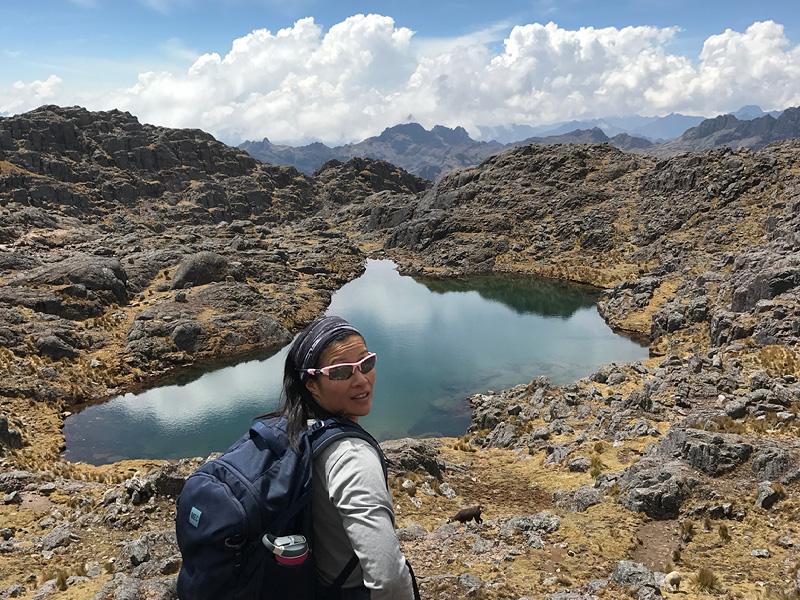
Cusco is the staging ground for hikers on the Lares trek, a short flight or 20 hour drive from Peru’s capital, Lima. At 11,152 feet, we are told to prepare for the effects of altitude sickness, which generally affects people at 8,000 feet or higher. Our guide offers us coca leaves to chew on to counter the effects of altitude. We are instructed to chew until soft and park it in our cheek for the medicinal properties to absorb. Yes, coca leaves are the root plant for cocaine. No, you don’t get high on them, but there is a slight caffeine-type buzz.
For three days of hiking and two nights camping, we are just about the only outsiders on the Lares trek.
We walk alongside a creek and come upon a village. An old woman approaches us with a home brew called Chicha, made from fermented corn. She speaks in Quechua to our guide Eddie then scoops a cup from a huge industrial sized bucket at her doorway. The drink tastes like wine gone terribly bad.
There are alpaca and sheep scattered across the mountain side and a lone farmer toils in the distance. Farming has to be done by hand. The steep and hilly landscape does not allow for machines. Pack mules are used to carry the harvest to where it will be eaten or sold. Farmers regularly pass us on foot, with a couple of animals transporting goods, using the same trail we were hiking. No roads exist. I imagine hardship when we pass dilapidated houses composed of clay and stone with tin roofs and tarp covered windows. Locals here wear layers of dusty, well-worn clothing and, oddly, they all wear plastic sandals with bare feet. They live off the land and there is no electricity.
But the people are friendly, waving and smiling. Children emerge on our path without an adult in sight. A few of us have balls to give the children and others offer treats.
“There are no predators to humans in the Andes,” says Eddie. So these children can wander all over the mountainside while their parents are farming. These descendants of the Incas have deep red tobrown-black skin across their cheeks and nose because of the constant exposure to sun and cold wind.
We feel that brush of that evening wind cooling our faces and bodies as we approach camp at 12,700 feet in the isolated village of Cuncani. With every step of altitude gained, my heart beats harder and faster. The feeling of being short of breath becomes more noticeable at altitude and with camp set up after a long day on the trail, I lay down and take my pulse — 90 beats per minute. Back home in Calgary, my heart rate would be around 60.
The morning after I ask Mike: “Did you sleep OK?”
“I’m freezing!” he says.
A frosty morning, below 0C, greets us for breakfast. I feel numbness and tingling in my hands and feet. We take our altitude sickness pills and I sip coca tea but could not shake away my symptoms — signs of altitude sickness.
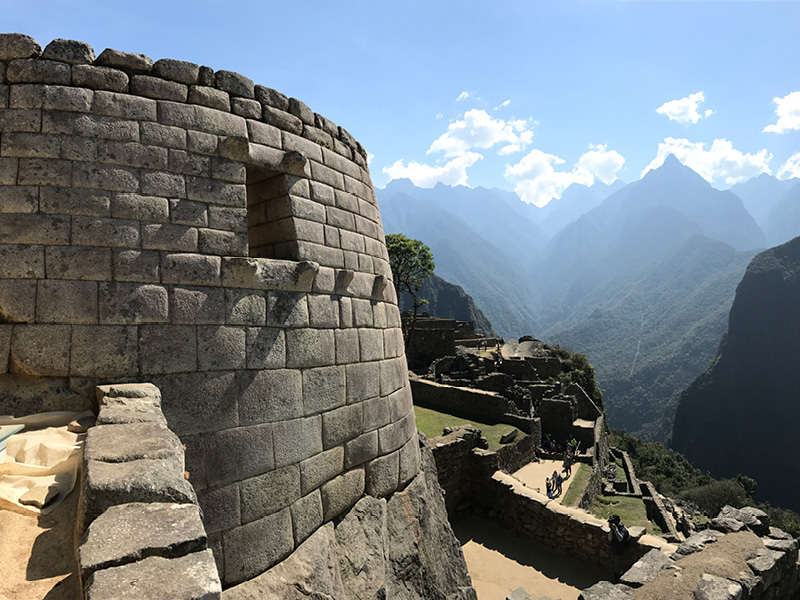
This day was all about our ascent to the summit of Sicllaccasa Mountain and almost 10 hours of trekking to the next campsite. By this point there are no more villages. Scenery changes from farmland on hillsides to rocky vistas with sparse vegetation. Among the craggy bronze rocks, a beautiful mountain lake sleeps silently. We are at the base of the monolith with the summit within our reach. Dirt crunches under Mike’s boots as he leads the way up the final 30 minutes to the top. I am collecting small rocks to help distract my racing heart and shallow breaths. Ambition takes over, step by step, in pole-planting rhythm, where the calling wind grows stronger and colder. We pierce the veil of clouds at 15,583 feet.
“Welcome to my office!” Eddie exclaims. I turn to absorb the breathtaking panorama of the surrounding peaks. We hug and give high fives to our guides in pure joy.
“It is here we honour the Pachamama,” says Eddie, “The goddess of fertility for the indigenous people of the Andes.” He takes out a bottle of whisky. In a circle, we swallow a capful each. A cairn layered in rocks and coca leaves was made. As Eddie pours the remaining whisky over top, he asks each of us to make a wish.
My wish is to share more of these amazing experiences with my family.
I produce the latest issue of IMPACT Magazine out of my pack for a photo at the summit.
Explore Peru
- Location: Peru is located in western South America
- Population: 31.77 million
- Languages: Spanish, Aymara, Quechua
- Getting to Machu Picchu (means Old Mountain): Domestic air transfer from Lima to Cusco; Bus from Cusco to Ollantaytambo, where Inca trail begins; Lares trek is a three-hour bus ride to the town of Lares; After the Lares trek, take a train to overnight in the tourist town, Aguas Calientes. Take the 6 a.m. bus to Machu Picchu.

